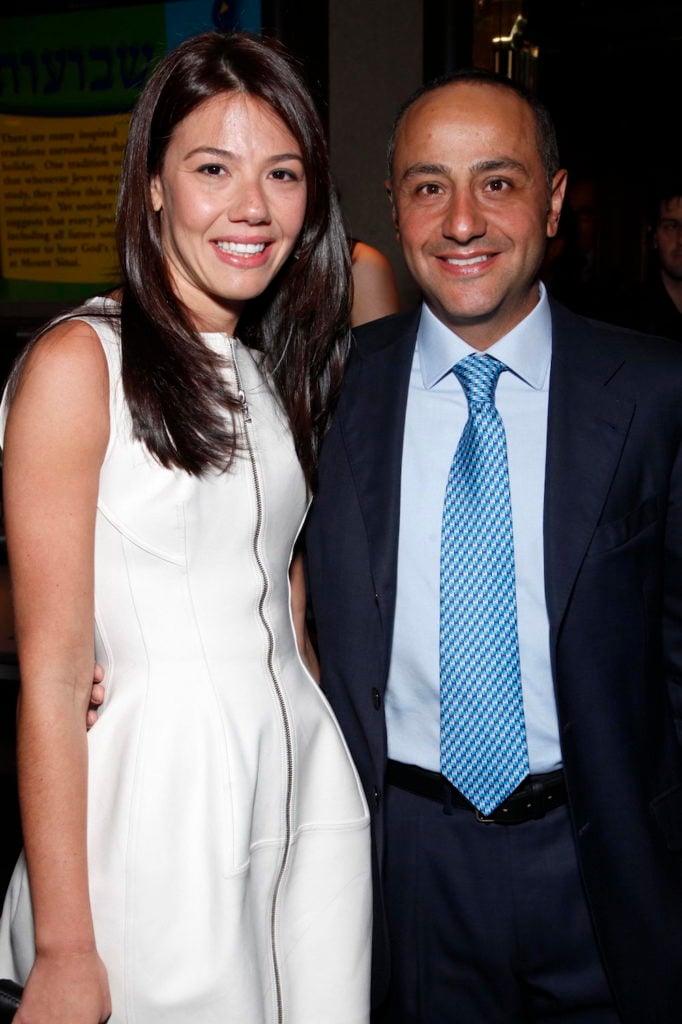While all art-world eyes are on the divorce between real-estate titans Harry and Linda Macklowe—and the fate of their $800 million art collection—another decoupling of elite collectors is making its way through the courts. The divorce of art-world royalty Libbie and David Mugrabi, first filed in 2018, is moving at a glacial pace as the two sides continually clash in court. At stake is an art collection worth hundreds of millions of dollars, pricey real estate in Manhattan and the Hamptons—and secrets about how the art world’s elite do business.
The latest round of tense back-and-forth came in New York Supreme Court in Manhattan on February 13 and lasted less than two hours before the presiding judge, Donald Hoffman, told the parties that they remained “so far apart” on the issues that the matter would have to be taken up at a later court date on April 2.
Judge Hoffman encouraged the Mugrabis and their attorneys to “get creative in terms of the settlement,” to avoid “discussing specific assets,” and instead to reach an agreed-upon “number.” Sources told Artnet News that while Libbie is seeking custody of their two children, David refuses to address the issue until a monetary settlement is reached.
The Mugrabi family, including David’s father, Jose, and his brother, Alberto “Tico” Mugrabi, have been fixtures and active traders at major auctions for at least two decades. They are widely known to own the largest private collection of Andy Warhol paintings in the world, as well as numerous works by blue-chip artists including Jean-Michel Basquiat, Richard Prince, George Condo, and KAWS.
The divorce between Libbie and David became tabloid fodder after news broke that Libbie had gotten her nanny to surreptitiously record a confrontation with a woman she had allegedly found sleeping nude with her husband. But the split also has the potential to lift the curtain on the business practices of one of the most powerful collecting dynasties in the art world. In evaluating David’s net worth, lawyers may expose the family’s use of offshore corporations to avoid scrutiny.
The art collection is expected to become a central topic in the proceedings. According to a New York Times report in January 2019, Libbie alleged David had moved an estimated $200 million worth of art out of their Water Mill home in an effort to hide assets. (David Mugrabi’s attorneys did not respond to request for comment.)
At issue is art acquired between 2005, when the couple married, and 2018, when they filed for divorce. “Marital property is defined as property that is acquired from the date of the marriage to the date of a divorce action or an anti-nuptial agreement is signed,” Ken Jewell, a matrimonial lawyer who is not involved in the case, explained to Artnet News.
In the event that some or all of the art has been placed in an offshore trust, as some sources have alleged, “if the assets were created during the marriage, and deemed marital property, then the courts will break open the trust and allocate the property according to equitable distribution law,” Jewell said.
In addition to deciding which artworks are marital property, the court is expected to order an appraiser to estimate the value of the collection. The judge will also have to consider whether the art was part of a business or was simply hanging on the walls of their home for personal enjoyment. If it is deemed part of a business, the court must determine how much Libbie contributed to that business in order to split up the assets.
Sources told Artnet News Libbie would help negotiate sales of work hanging on the wall of their Water Mill estate (or related artwork), which was on full display during dinner parties and other entertaining events.
Libbie and her attorney declined to comment on the case. A source familiar with the proceedings told Artnet News that she plans to ask for $120 million in addition to artworks, the Watermill house, $1.6 million in legal fees, and $75,000 per month for 10 years.






